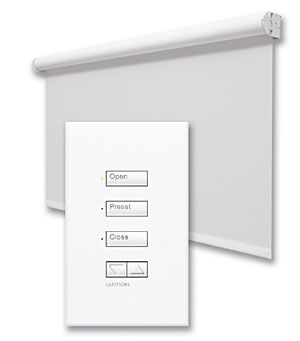Daylight in the Office Space
Types of Controllable Roller Shades
Today there are several types of automated roller shading systems available. Varying in sophistication and aesthetic appeal, an important differentiating factor between systems is whether it is automated with a motor or an electronic drive. Popular shading automation options include: AC-tubular motor systems, battery-powered motor systems, and low-voltage electronic drives.
AC-powered tubular motor systems have been used traditionally for exterior shade and awning systems. Especially popular in Europe, these powerful motors can support heavy fabric loads and are durable enough to withstand outdoor elements, such as wind and rain.
|
||||||||||||||
Although AC-tubular motors are a good solution for automating exterior shade and awning systems, certain characteristics (of AC shades) make this solution less desirable for interior systems for a variety of reasons. First, motors can be noisy and distracting when operated. Outside, this sound is drowned out by ambient noise. Inside an office space, it could be prohibitively distracting. Second, due to inherent variations in AC motor technology, these AC tubular motor systems cannot be relied on to track evenly over time.
Battery-powered systems are also available, providing wireless power and control. While great for retrofit projects, the lift capabilities and system size are limited by battery-power. With a battery life rated for between two to three years, replacement could be problematic in shades mounted in hard-to-access areas. Battery-powered shading motors operate with some audible noise (similar to a battery operated drill), and controlled movement and precision pre-sets with the battery-operated system are difficult.
Low-voltage electronic drive systems address many of the aesthetic and functionality concerns raised by the two previous technologies. Quieter than regular line voltage or battery-powered systems, electronic drives are capable of operating at 44 dBA at three feet, a sound comparable to a whisper. This near-silent movement can add an impressive element to a room's atmosphere, or occur almost invisibly without distracting room occupants. Intelligent electronic drive systems can be programmed to track multiple shades together, providing precise, coordinated movement across a wall or throughout a building. These systems can also be programmed with pre-sets. These pre-sets allow each shade in the system to be operated independently, to meet individual preferences, and then re-aligned with the rest of the shades in the group with one button press.
|











